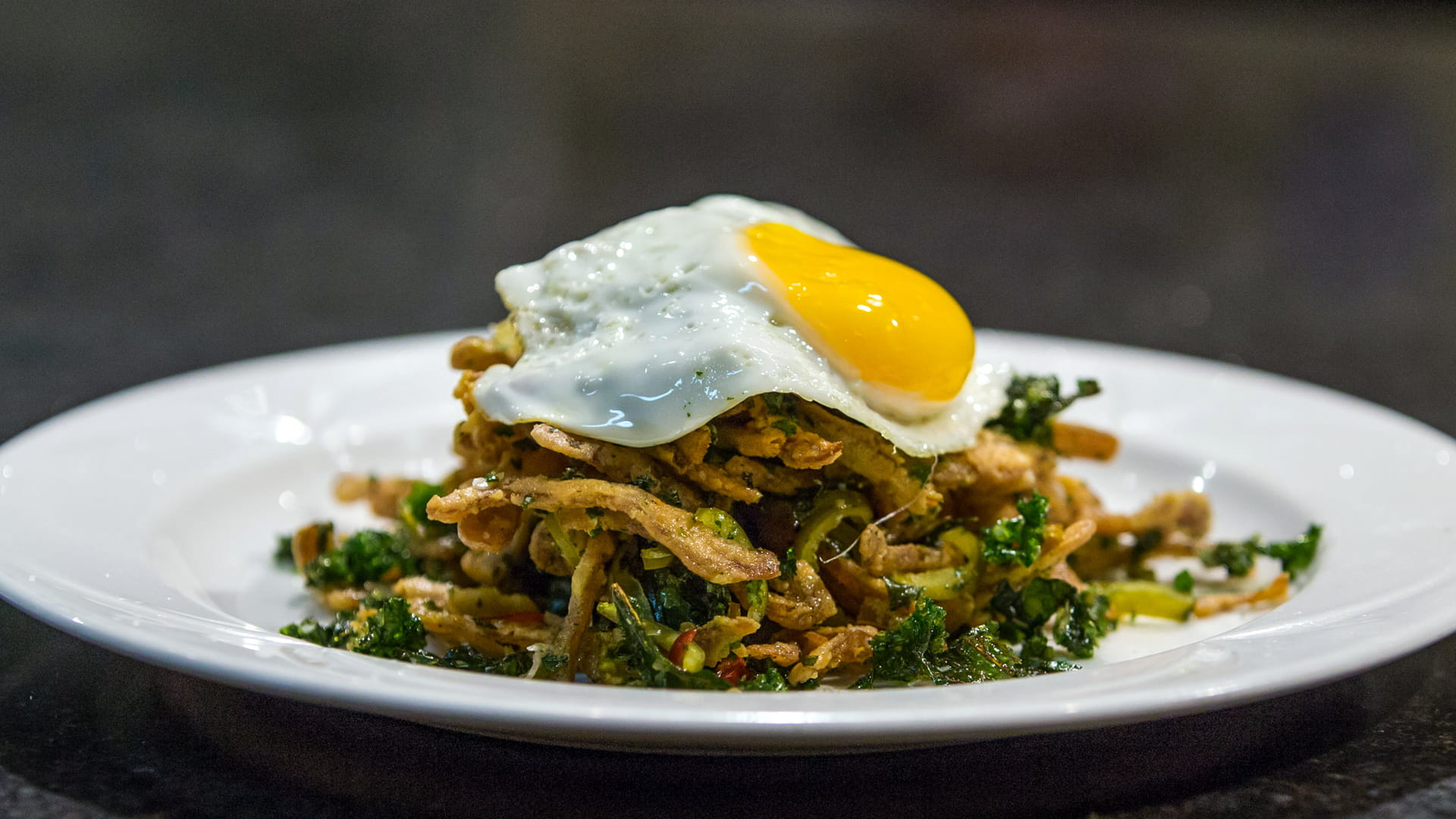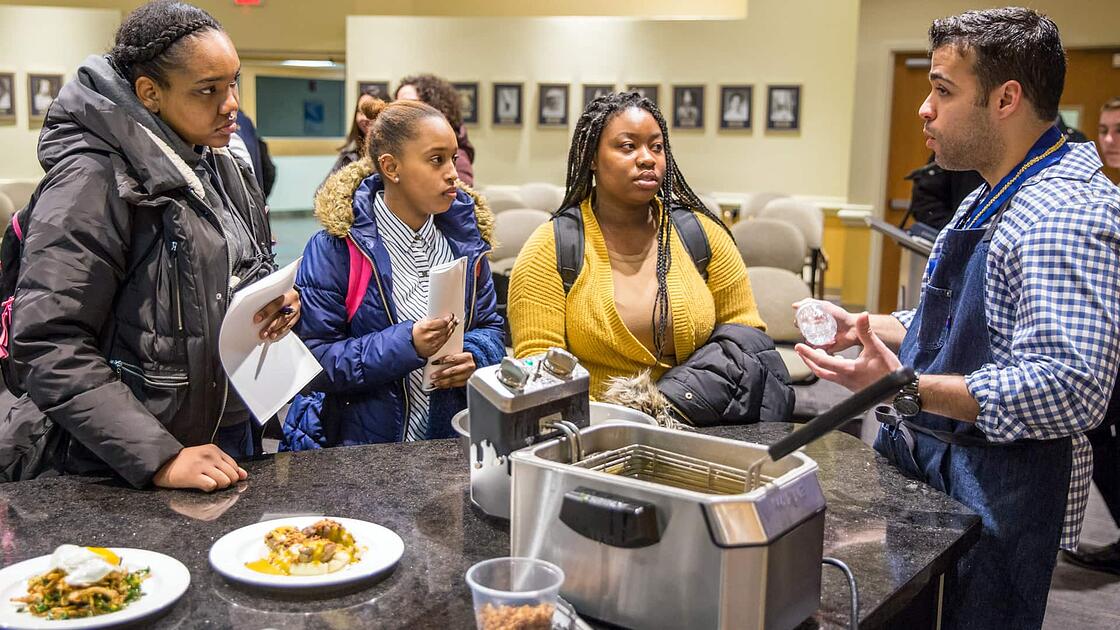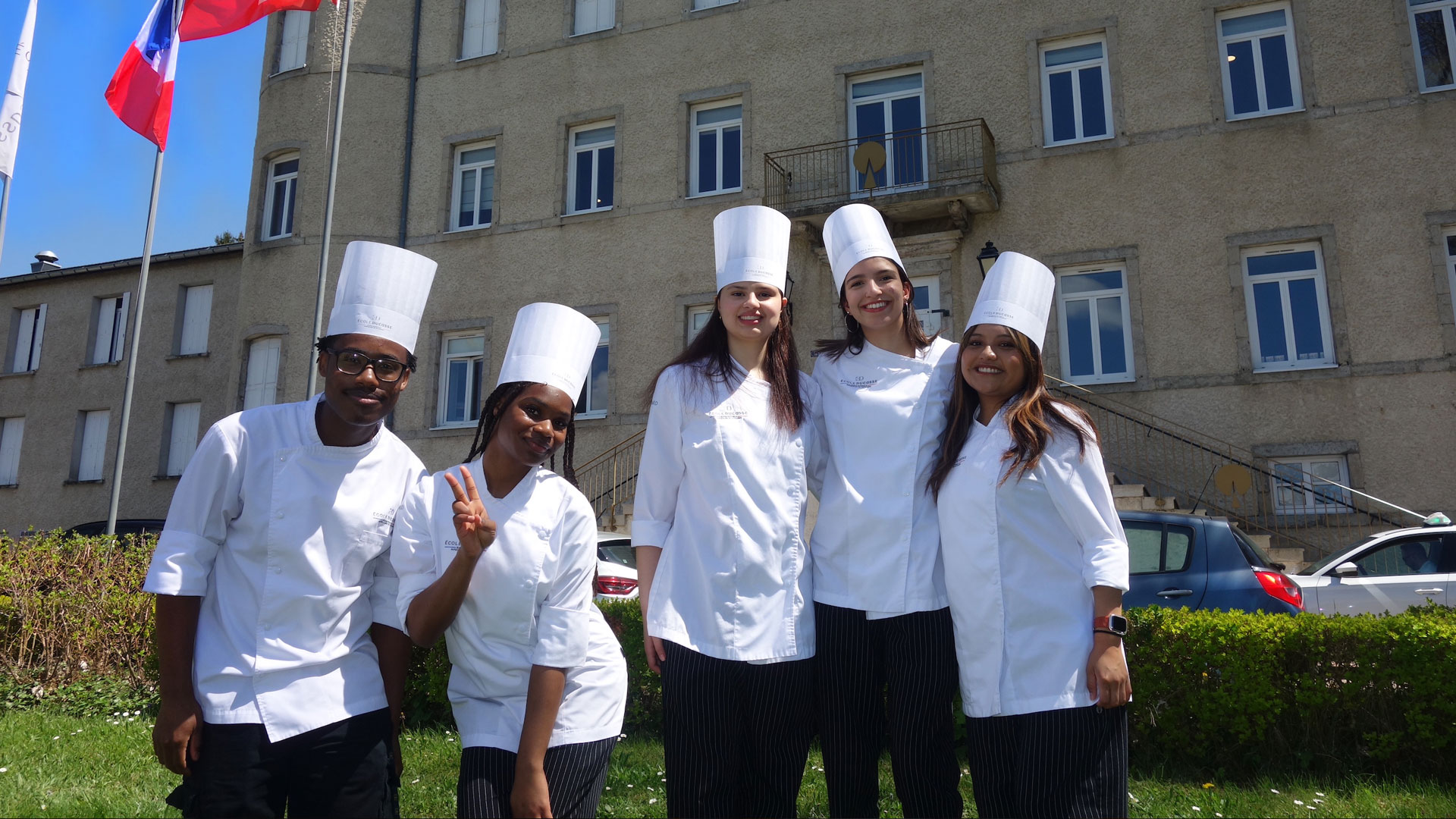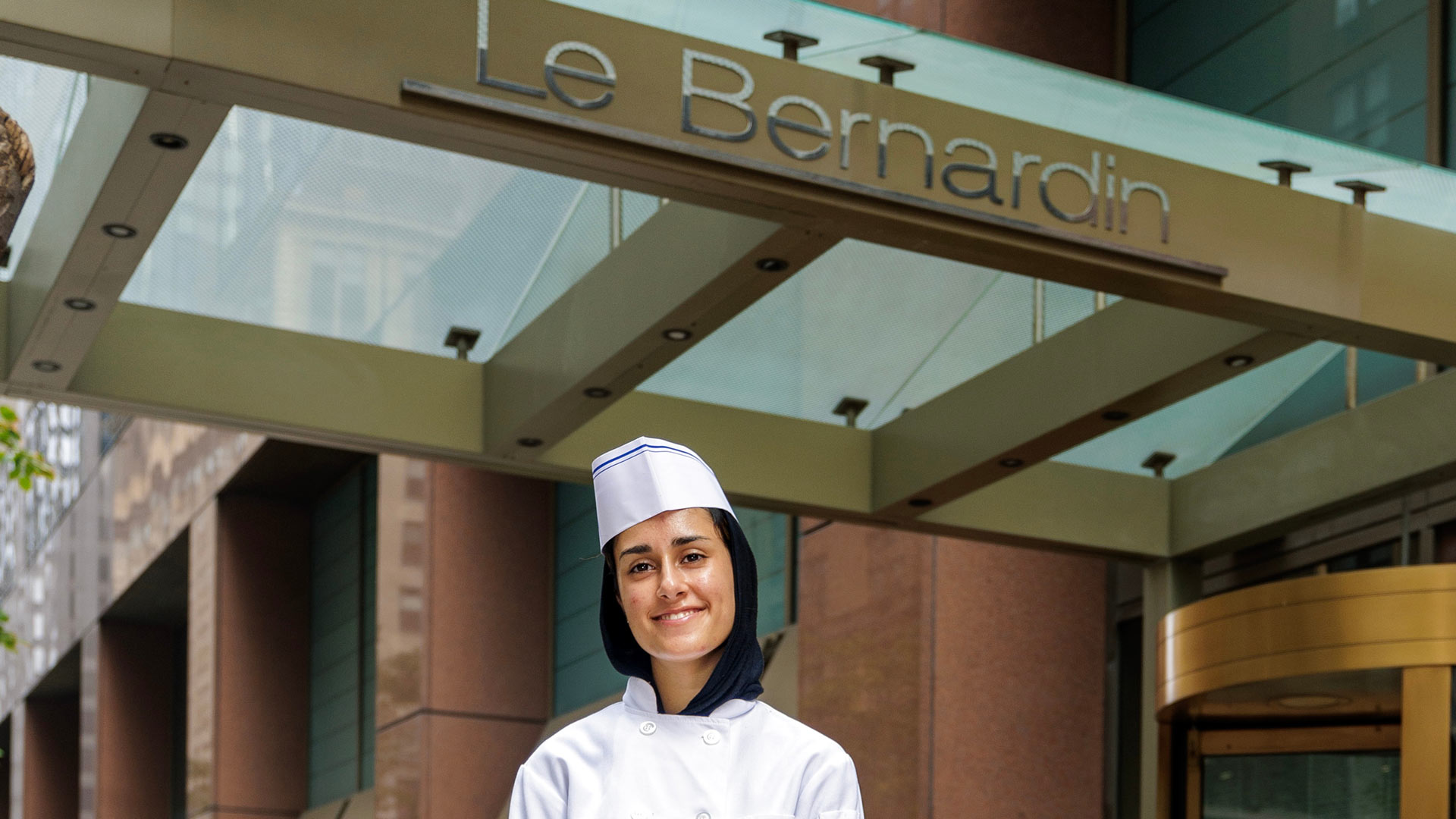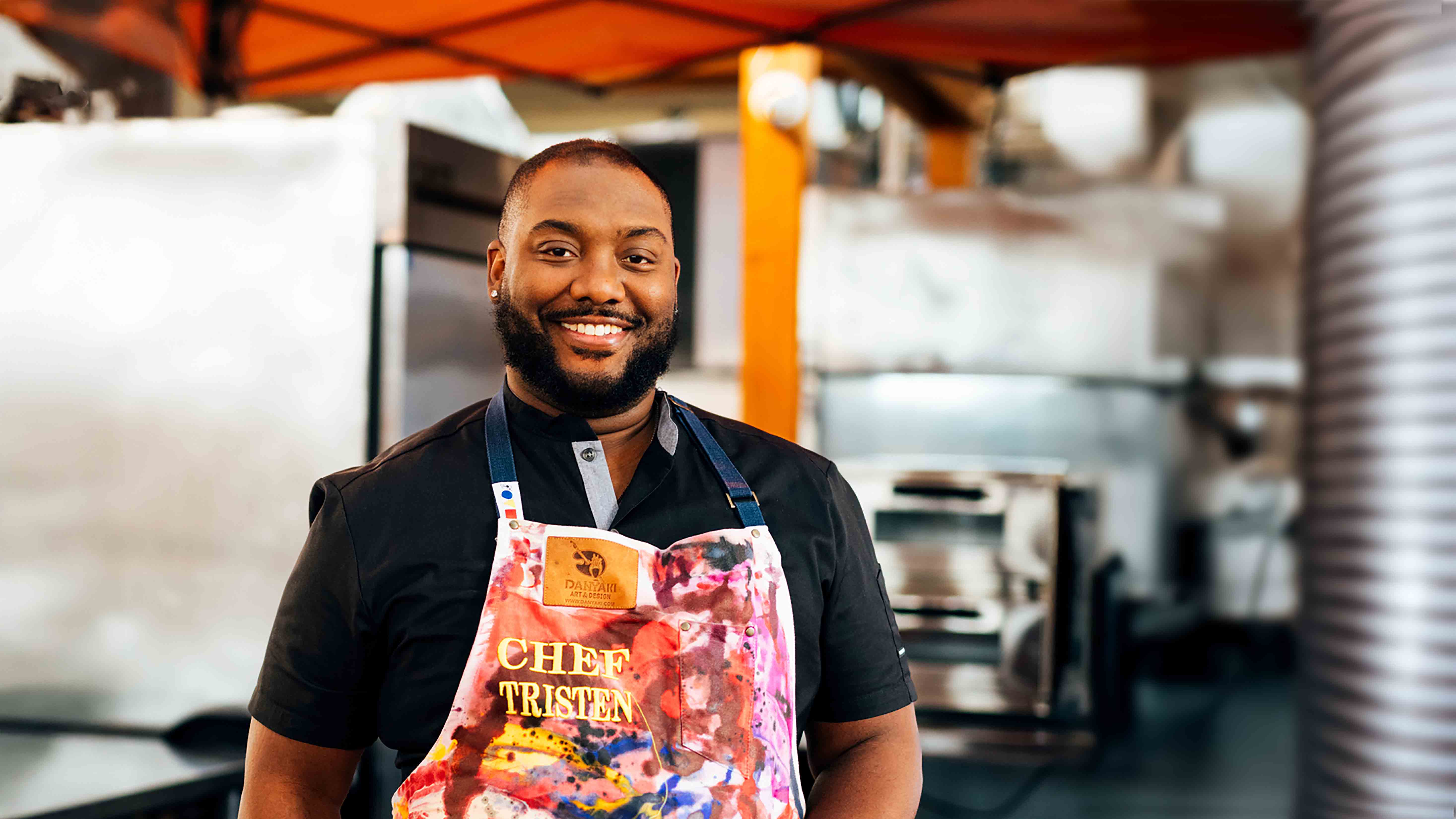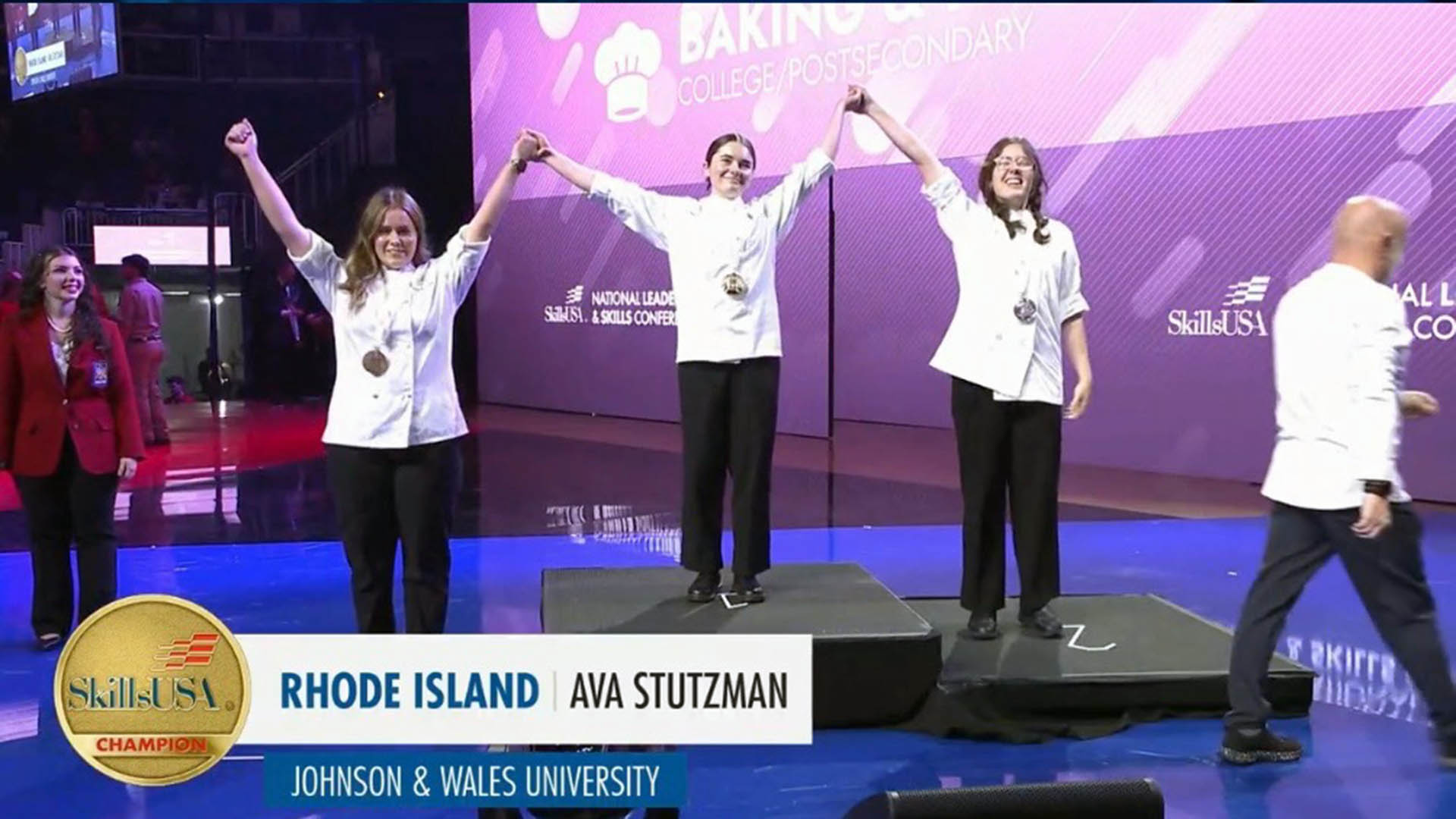‘Give Your Best + Work for the Best’: The Purple Pig’s Jimmy Bannos, Jr. Returns to JWU
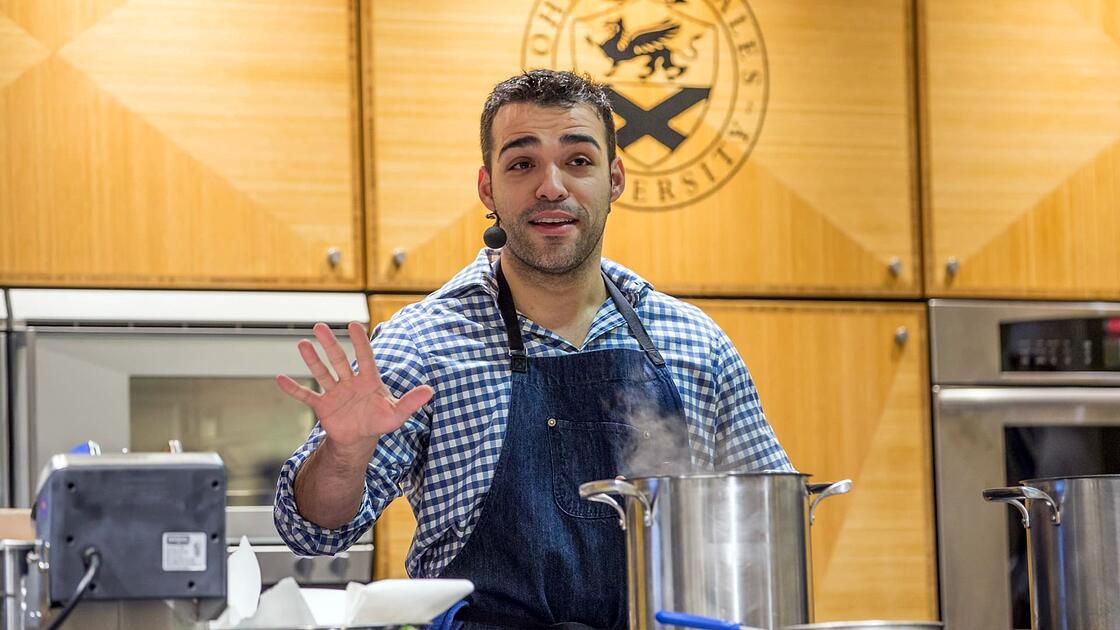
Food runs in Jimmy Bannos, Jr.’s family — literally. “I’m a fourth generation restaurateur,” the 181st Distinguished Visiting Chef (DVC) and chef-owner of Chicago’s The Purple Pig recently told a rapt crowd of students and faculty. “My mom is Italian and my dad is Greek, so food is a major component of our lives.”
From the age of 3, Bannos grew up working in the kitchen of his dad’s celebrated Chicago eatery, Heaven on Seven. “I knew this was the path I wanted,” he noted. And when the time came to choose a culinary school, he was decisive about that, too: “There were plenty of culinary schools in Chicago. But I wanted to go to the best — which is here — and I knew I wanted to get out of my comfort zone, have new experiences.”
At JWU, Bannos was extremely goal-oriented. He set his sights on the best restaurant in Providence, Al Forno, only to be told there were no kitchen openings. Bannos’ reply: “I’ll work for free.” After a month of staging in the kitchen, he was hired.
"There were plenty of culinary schools in Chicago. But I wanted to go to the best — here — and to get out of my comfort zone."
After he graduated from JWU in 2004, Bannos cooked extensively in Italy and New York City. In 2009, he returned to his hometown to open the Purple Pig, a restaurant dedicated to “Cheese, Swine & Wine” and showcasing the flavors of Spain, Italy and Greece. At JWU, Bannos demonstrated two signature Purple Pig dishes:
- Pig’s ear with crispy kale, pickled cherry peppers and quail egg
- Milk-braised pork shoulder with mashed potatoes and puffed farro
As he cooked, the affable Bannos switched effortlessly between sharing practical cooking advice (“Wondra flour is the BEST for frying”) and filling in lessons from running his successful restaurant. He encouraged students to read as much as possible: “It’s SO important. My dad has thousands of cookbooks, and I’ve got about 500. I try to read at least 30 minutes a day. Always keep learning new things.” (As an example, he talked about picking up the Tartine cookbook and teaching himself how to make bread from scratch — a skill he then passed along to his team.)
As Bannos prepared a beautiful piece of Berkshire pork shoulder for its braising bath of chicken stock fortified with pork neck bones (for a more balanced flavor) and milk (“the lactic acid tenderizes the meat”), he encouraged students to gain a full understanding of butchering techniques: “Know the cuts, know what they do. Pick up a couple of great butchering books and practice!”
“Do you change the menu a lot?” asked one student.
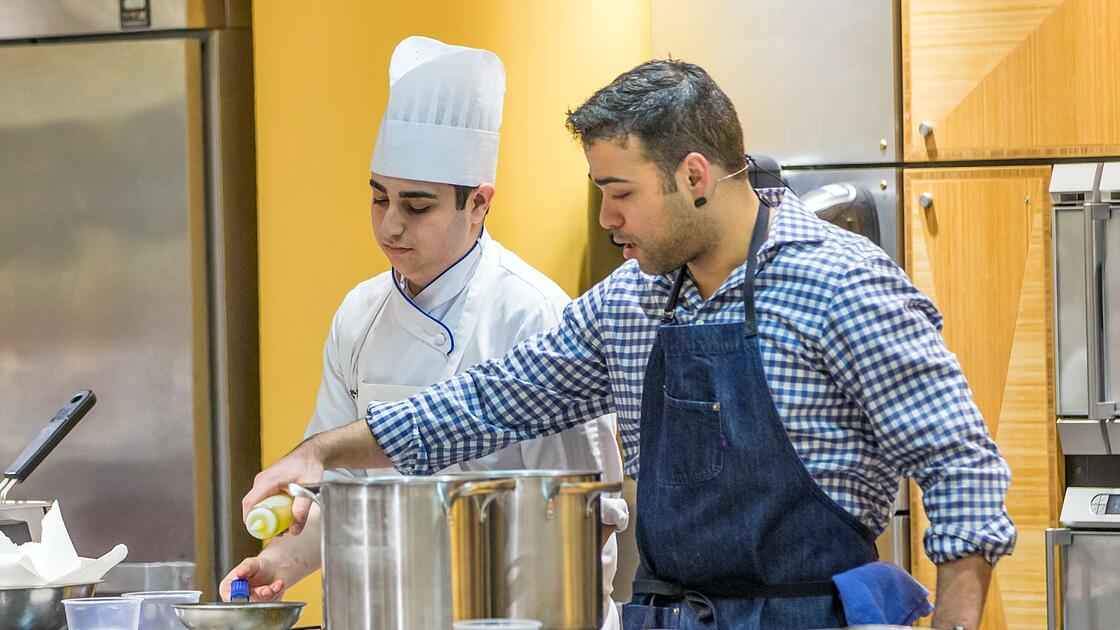
"Read cookbooks. I try to read at least 30 minutes a day — keep learning new things."
“Yes, but for me it’s also important to have the dishes that made us popular out of the gate — 6-8 items — plus other dishes that keep evolving.” (The restaurant has roughly 60 items at any given time. The pork shoulder is one of the menu’s “classics”; Bannos estimates they sell 800-1000 orders each week.)
The pig’s ear dish exemplifies another Purple Pig trademark: Making underutilized cuts of meat “really deliver” — which requires cultivating the trust of your guests. The ears are not inherently easy to cook, with a full 7-house braise (“so the cartilage breaks down”), followed by a 24-hour chill in the walk-in. They must then be finely julienned so that they fry up lightly and crisply. (Remember the Wondra flour? Here’s where it comes in handy.)
The dish’s other MVP? Pickled cherry peppers (a very Chicago touch). “I love pickles,” explained Bannos. “We pickle and ferment EVERYTHING at the restaurant — pickle, pickle, pickle! We use acid like salt — it’s got to be balanced. Textural balance is crucial, too — texture is everything.”
At the end of his demo, Assistant Dean TJ Delle Donne '04, '07 MAT, and Rational AG Corporate Chef Daniel Lessem '94 presented the 2018 DVC Scholarship to Joshua Gruenberg, a Club of Culinary Excellence member with a special interest in food science.
Bannos’ final bit of advice for students? “Give your best and work for the best!”
Follow The Purple Pig on Twitter and Instagram.
